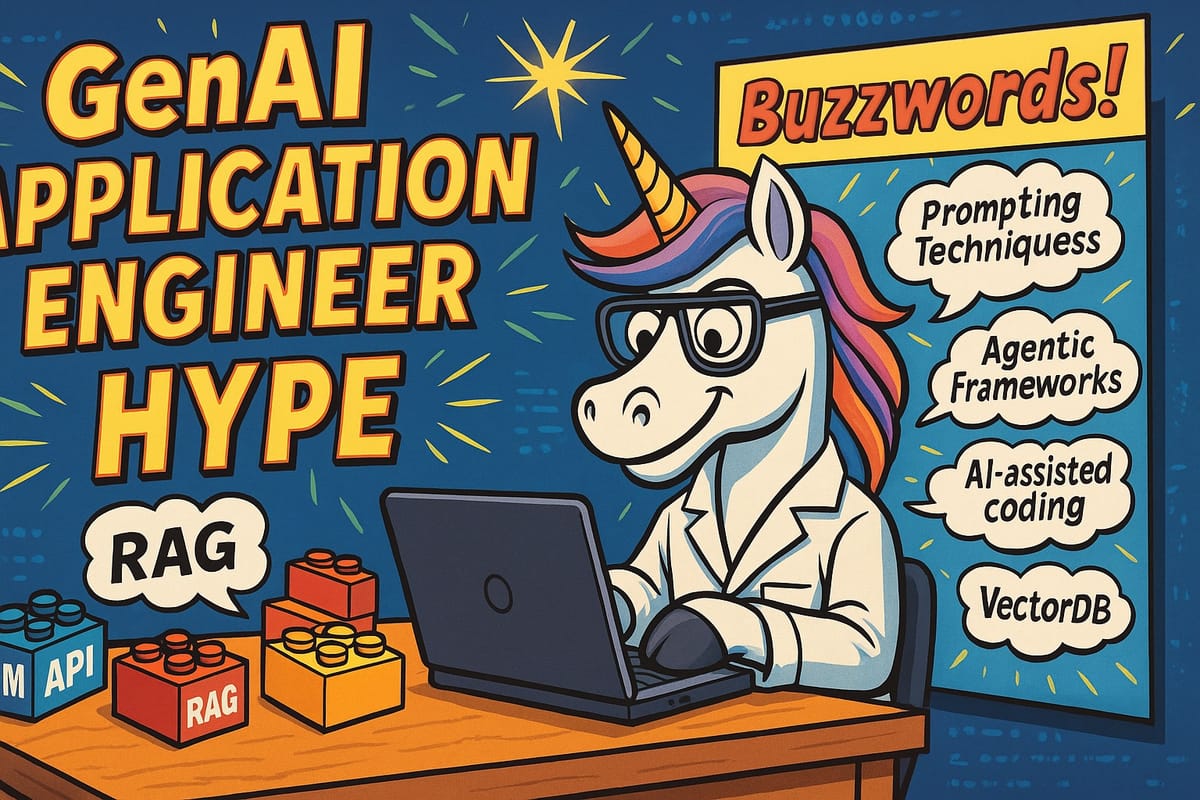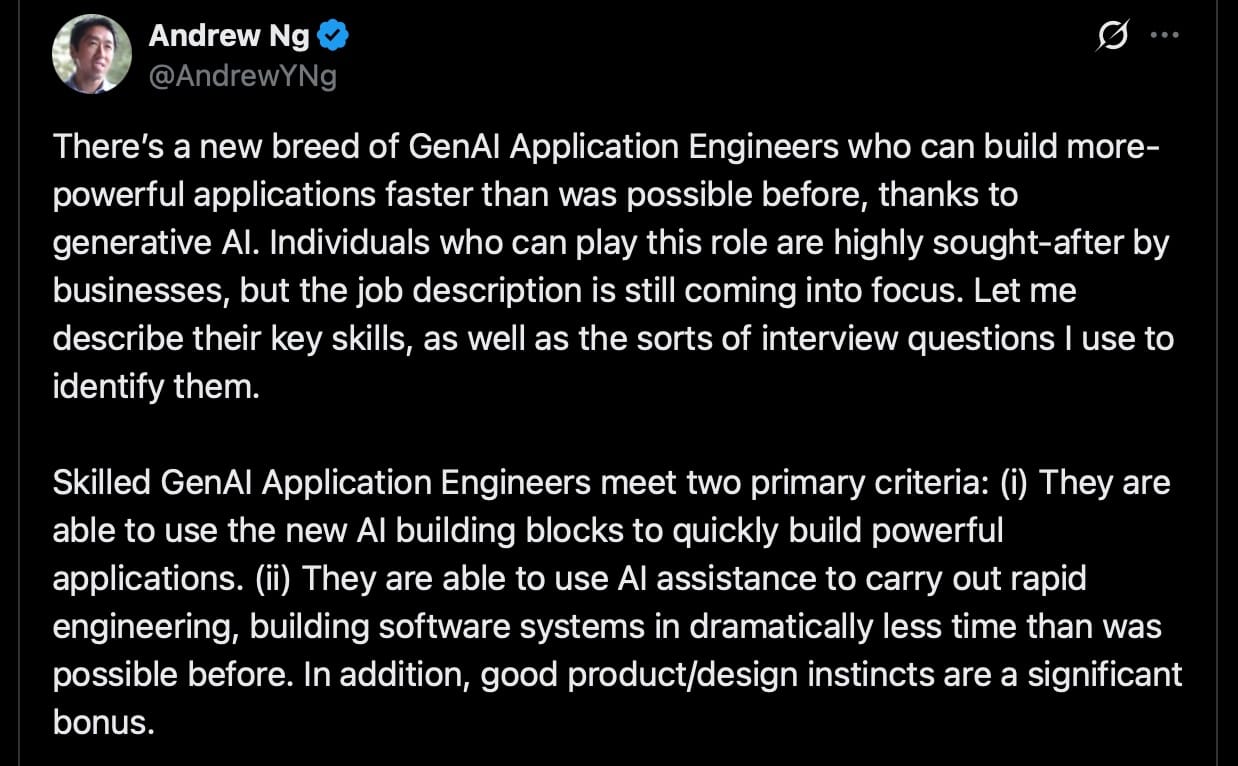Hire a GenAI Unicorn! Who Needs Actual Experience?
... Ask your local DevOps lead if they’ve got time to fine-tune embeddings and craft pixel-perfect UIs ...


Oh, joy, another breathless paean to the miracle of “GenAI Application Engineers,” aka the unicorns who’ll apparently solve every problem since sliced bread. Apparently, before these wizards arrived, software development was a snail-paced slog, and now we merely summon our magical AI genies to conjure fully-formed applications in “dramatically less time.” Speed metrics? Benchmarks? Peasant concerns. Just grab a handful of “building blocks,” rub them together, and presto, your app is live before you can even say “deployment pipeline.”
And speaking of building blocks, let’s marvel at the analogy overload. SDKs are like LEGO bricks, because if there’s one thing we all secretly know, it’s that complex software systems are essentially kindergarten playtime. Prompting techniques, agentic frameworks, RAG, voice stacks, async programming, data extraction, embeddings, vectorDBs, fine-tuning, graphDB usage, agentic browser use, MCP, reasoning models… and so on ad nauseam. Listing enough exotic nouns clearly equals depth, right? When you can’t think of more fancy-sounding terms, you just tack on “and so on” and hope nobody notices the intellectual vacuum.
Then we worship at the altar of AI-assisted coding. GitHub Copilot arrived in 2021 to pioneer, get this, code completion. Because bracket insertion was clearly a dark art until someone whispered “AI” into an IDE. Cursor, Windsurf, Codex, Claude Code… each new tool reinvents the mundane miracle of autocompletion into something mystical. And if you blink, you’ll miss the obsolescence panic: coding assist tools become “obsolete much faster” than building blocks. That must be why Copilot 2032 is already in alpha and we’re scrambling to upgrade our neural lace.
But wait, there’s more. Our mythical GenAI engineers are also part-time product strategists and UX savants. In the fairyland envisioned, product managers deliver pixel-perfect mockups, and engineers simply transcribe them into code. In reality, specs might as well be hieroglyphics. Yet these demi-gods of code must possess user empathy and design instincts, because steering an LLM toward a thoughtfully selected product goal doesn’t immunize you from actual human frustration.
And the pièce de résistance: interview questions guaranteed to separate wheat from chaff. “Mastery of AI building blocks?” Of course, just rattle off 47 niche buzzwords to prove you’re a bona fide wizard. “How do you keep up with the latest developments?” Ah yes, by devoutly reading The Batch, binge-watching ninety-minute tutorials, and exchanging memes in Slack channels. Because nothing says “ahead of the game” like regurgitating newsletter summaries and hitting refresh on GitHub stars.
This whole spectacle is the very definition of “drinking the Kool-Aid.” We’re promised super-engineers who juggle half a dozen deep specializations, prompt wizardry, code generation, UX design, product strategy, community management, all before lunch. Reality check: most of these are careers in themselves. Ask your local DevOps lead if they’ve got time to fine-tune embeddings and craft pixel-perfect UIs. But hey, if you ever meet someone who claims they can do all of the above, and do it “dramatically faster”, do yourself a favor: step aside, grab some popcorn, and watch the show. Because the only true skill these GenAI Application Engineers seem to possess is the uncanny ability to market themselves with maximum hyperbole.